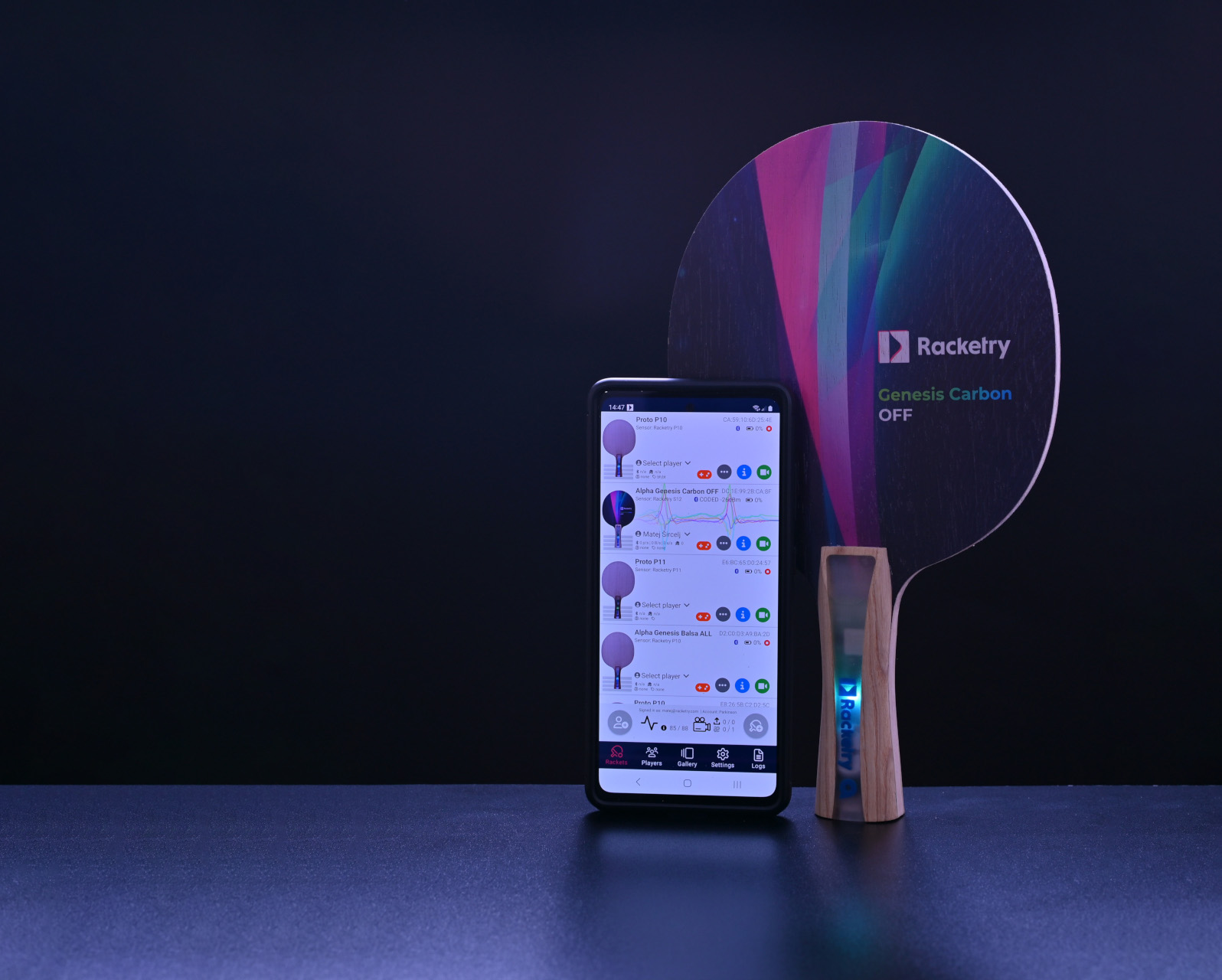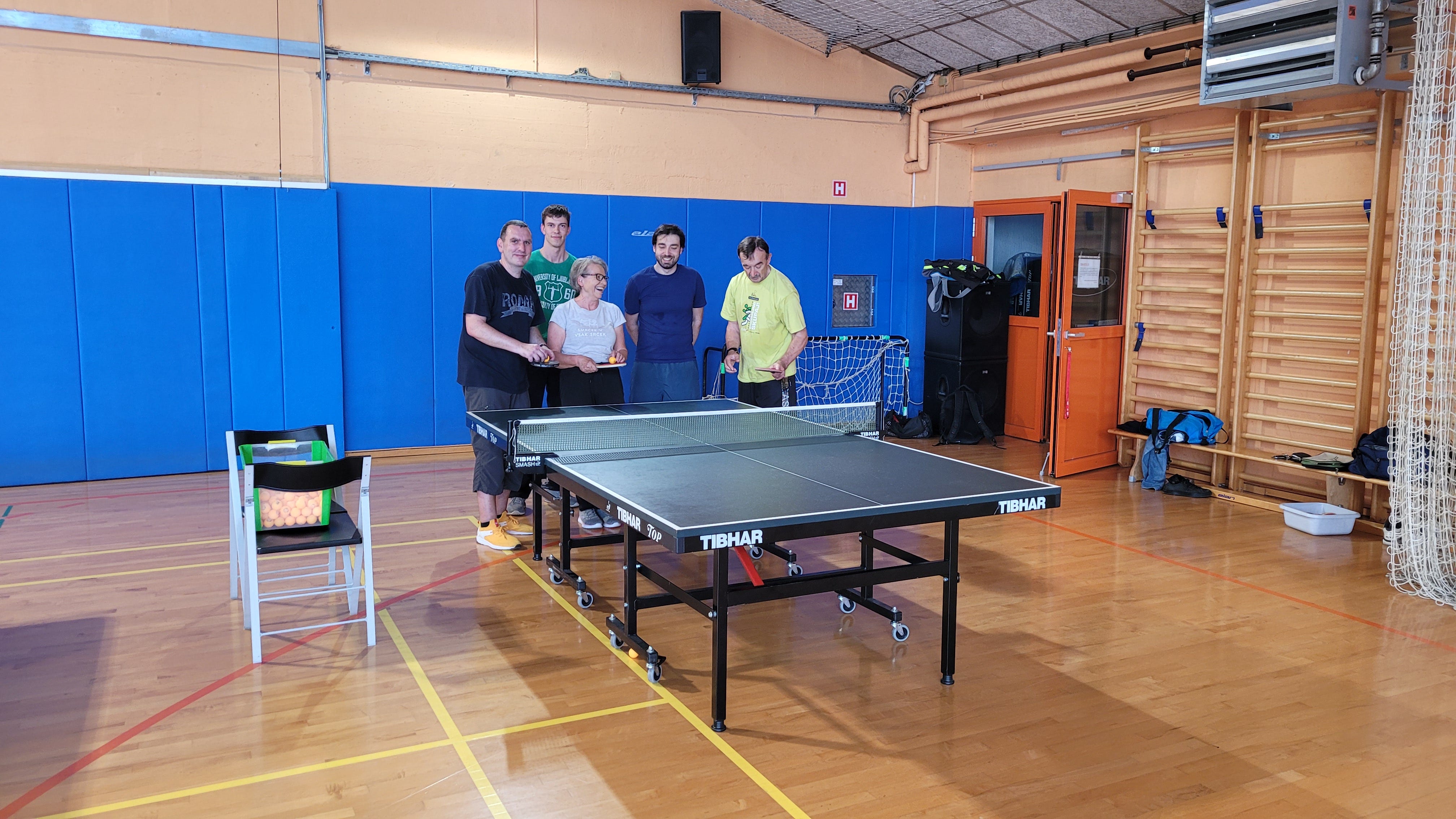Table Tennis and Parkinson’s Disease, gathering more vital data with smart ping pong paddles
Parkinson’s disease is a neurodegenerative disorder that affects millions of people worldwide. Its symptoms, including tremors, stiffness, and balance issues, can significantly impact the quality of life for those diagnosed with the condition. However, there is growing evidence suggesting that engaging in physical activities and sports can have a positive impact on managing Parkinson’s symptoms.
Recently we had the incredible opportunity to be a part of such story. Witnessing the positive impact of table tennis on individuals living with Parkinson’s has been immensely rewarding and because of that we are committed to continuing our efforts to enhance their quality of life through the ping pong game we all love.
We were approached by the Slovenian Faculty of Sports (https://www.fsp.uni-lj.si/en/) to collaborate on a groundbreaking research project focused on the intersection of table tennis and Parkinson’s disease. They sought our assistance providing our innovative smart table tennis rackets for their research participants. These specially designed rackets incorporate advanced sensors and artificial intelligence algorithms that track and analyze the players’ movements in real-time.
This partnership allowed us to contribute to the scientific understanding of the benefits of table tennis in Parkinson’s disease management and to further refine our smart table tennis technology for the specific needs of Parkinson’s patients.
Research took place for 12 weeks from April to June at Slovenian Faculty of Sports. Training sessions were held twice weekly for 1 hour, were animated by Simon Mikulič and supervised by Prof. Vojko Strojnik, Ph.D.
Since not all participants were previously familiar with table tennis this presented us with a challenge get the best practice out of the sessions, and what parameters to measure. As this was first such project for us we decided to just measure how many ball strokes each participant made. The results we got were quite fascinating, but about that a bit later.
Understanding Parkinson’s Disease
Parkinson’s disease is a complex neurodegenerative disorder that affects the nervous system, specifically the dopamine-producing cells in the brain. It is characterized by a range of symptoms, including tremors, muscle rigidity, bradykinesia (slowness of movement), and postural instability. These symptoms gradually worsen over time, impacting a person’s ability to carry out daily activities and affecting their overall quality of life. The underlying cause of Parkinson’s disease is still not fully understood, but both genetic and environmental factors are believed to play a role. The loss of dopamine, a neurotransmitter responsible for coordinating movement, leads to the motor symptoms observed in Parkinson’s. Additionally, as the disease progresses, it can also affect non-motor functions, such as cognitive abilities, mood, and sleep. While there is currently no cure for Parkinson’s disease, various treatment options, including medication, physical therapy, and lifestyle modifications, can help manage symptoms and improve quality of life for individuals living with the condition.
Sport can play a pivotal role in alleviating the symptoms of Parkinson’s disease. Regular physical activity, such as participating in sports, has been shown to improve balance, flexibility, and motor skills in individuals with Parkinson’s. Engaging in sports activities that require coordination and precise movements helps individuals regain control over their motor functions, reducing tremors and stiffness. Moreover, sports provide an opportunity for individuals with Parkinson’s to improve their cardiovascular health, strength, and endurance, contributing to an overall sense of well-being. The cognitive demands of sports, including strategic thinking and quick decision-making, stimulate the brain and help combat cognitive decline often associated with Parkinson’s. Beyond the physical and cognitive benefits, participating in sports can enhance emotional well-being and social interaction. Joining sports teams or clubs fosters a sense of belonging, creates a supportive community, and reduces feelings of isolation and depression. The combination of physical exercise, cognitive stimulation, and social engagement in sports offers a holistic approach to managing Parkinson’s disease, improving both the physical and mental aspects of an individual’s life.
Ping pong has emerged as one of the most prominent sports in aiding individuals with Parkinson’s disease. Its unique characteristics make it particularly well-suited for managing the symptoms of the condition. The fast-paced nature of ping pong requires quick reflexes, hand-eye coordination, and precise movements, which directly address the motor challenges faced by Parkinson’s patients. The repetitive hitting of the ball helps improve fine motor skills and reduces tremors, enhancing overall control of movement. Additionally, the dynamic nature of the game, with its constant movement and weight shifting, contributes to improving balance and stability. Ping pong also offers cognitive stimulation as players need to focus, concentrate, and strategically plan their shots, promoting cognitive function and combating cognitive decline. Furthermore, ping pong’s social nature fosters a sense of community and emotional well-being. Participating in group sessions or joining table tennis clubs provides opportunities for individuals with Parkinson’s to connect with others, reducing isolation and depression. The combination of physical, cognitive, and social benefits makes ping pong an exceptional sport for alleviating the symptoms of Parkinson’s disease and improving the overall quality of life for those affected by the condition.
Understanding the results
Physical tests of participants were measured before and after the table tennis program. But what was most interesting to us was how many strokes did each individual made in an hour of the practicing session.
From a table tennis coach perspective
It is important to approach the data presented here with caution, as various factors can influence stroke counts during training sessions. These counts often reflect the organization and structure of the training rather than the participants’ daily form. However, the most significant factor that can make a substantial difference is the quality of the sparring partner. When the sparring partner is skilled at correcting the ball and providing manageable returns, it allows for longer rallies and enhances the overall training experience. Additionally, the specific activities being practiced during the session also play a role in determining stroke counts. By considering these factors and creating a conducive training environment with skilled partners and purposeful activities, participants can maximize their training sessions and achieve better results.
The sessions involved a variety of situations. Participants engaged in different activities, including learning new techniques, playing with sparring partners, and even playing with each other. In addition to playing table tennis, there were instances where they incorporated additional movement exercises into their sessions. This diverse range of activities provided a comprehensive and holistic training experience.
From a table tennis coach perspective
During the training sessions that took place twice a week, all participants showed great improvement in playing table tennis. They stayed motivated by setting smaller goals during the training sessions. These goals were achievable tasks that they aimed to accomplish, such as hitting the ball a certain number of times or trying a specific technique. By focusing on these smaller challenges, they felt a sense of accomplishment each time they reached their targets. The counting of stokes feature of our smart table tennis rackets gave the participants an overall goal that gave them a sense of achievement at the end of the session and more motivation to even improve the score the next time. This helped them stay motivated and encouraged them to continue pushing themselves during the training sessions. As a result, their progress was evident in their improved performance behind the table tennis table.
Every experienced table tennis player can recognize the subconscious reaction when something unexpected happens: ball hits the top of the net or an edge of the table. Personally I was most fascinated to see that every one of the participants still had this in them, and many many points were saved this way. Sometimes in the midst of chaos with movements faster and more fluid than before.
Seeing this gave me hope. It made me believe that table tennis has something special that awakens our deepest senses and helps us react to the world around us. It tapped into their natural abilities, like quick reflexes and coordination. Watching them improve and perform so well reminded me of the power and magic of table tennis. I hope that more people with Parkinson’s will discover the benefits of table tennis and experience the joy, sense of accomplishment, and overall well-being that it can bring.
For people with Parkinson’s we have compiled a list of links where they can get more information about their condition and
Parkinson's societies & clubs near me:
Global & USA: https://www.pingpongparkinson.org/
Slovenia: https://www.trepetlika.si/
Croatia: https://www.parkinsonimi.com/
© 2023 racketry.com All Rights Reserved

